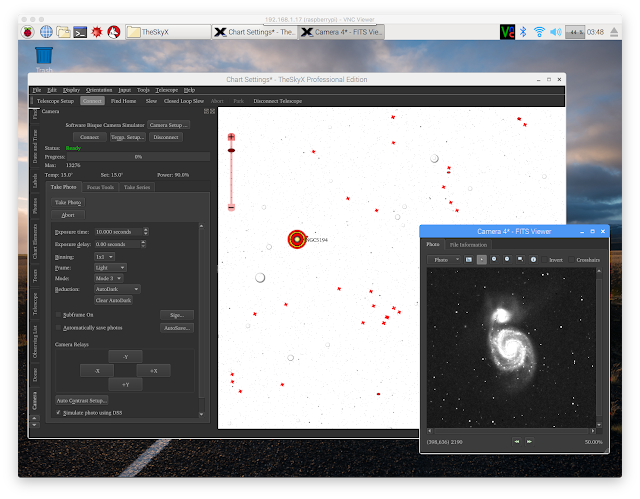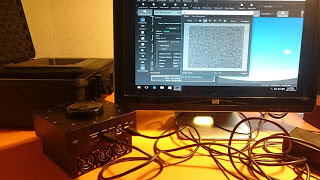One of the exciting parts about working on the ATEO project is the opportunity to try out and play (and yes 'play' is the correct term here!) with the newest technologies. One such piece of hardware that will be an integral (and crucial) part of the ATEO environment is the computer that is required to operate the telescope, camera, and other ancillary functions. Typically a full-size desktop computer is chosen for this task, but with this comes additional problems and support issues, including maintenance of the OS (upgrading and patching), hardware (failures of hard drives, power supplies, etc), and increased power requirements, to name a few. Since our plan is to run like a minimal system as possible (running TheSkyX Professional to control the mount/camera/filter wheel/focuser, plus some additional custom software), we don't necessarily need a high-powered desktop system when we have Raspberry Pi.
What is Raspberry Pi? Simply it is a computer about as powerful as the average smartphone with about the same form factor (a bit bigger due to the additional ports) and power requirements. With the addition of four USB ports (which will connect to our mount, camera, etc), and an ethernet port (plus wifi and HDMI output), it has all the capabilities we need.
Running the Raspbian OS (a variant of Debian Linux), Software Bisque (as of December 2016) now has a supported version of TheSkyX built for this platform. Below is an image of TheSkyX running on our Raspberry Pi:
What are some of the benefits of using a Raspberry Pi over a full-sized computer?
Read More
What is Raspberry Pi? Simply it is a computer about as powerful as the average smartphone with about the same form factor (a bit bigger due to the additional ports) and power requirements. With the addition of four USB ports (which will connect to our mount, camera, etc), and an ethernet port (plus wifi and HDMI output), it has all the capabilities we need.
 |
| A Raspberry Pi - Ain't it cute? |
Running the Raspbian OS (a variant of Debian Linux), Software Bisque (as of December 2016) now has a supported version of TheSkyX built for this platform. Below is an image of TheSkyX running on our Raspberry Pi:
 |
| TheSky on Pi. |
- Minimal power requirements (a cell phone charger will power the Pi)
- Minimal cost (<$100 worst case for a RaspberryPi with case and microSD card)
- Low cost means we can easily afford to have a spare Pi on site ready to go as a backup in case the main one fails
- Better reliability (in theory) since there are fewer physical components to fail
Of course, we will have a full-sized computer (donated!) on hand in case we need it...but with our Pi, I have a feeling we won't be needing it too much :).



















